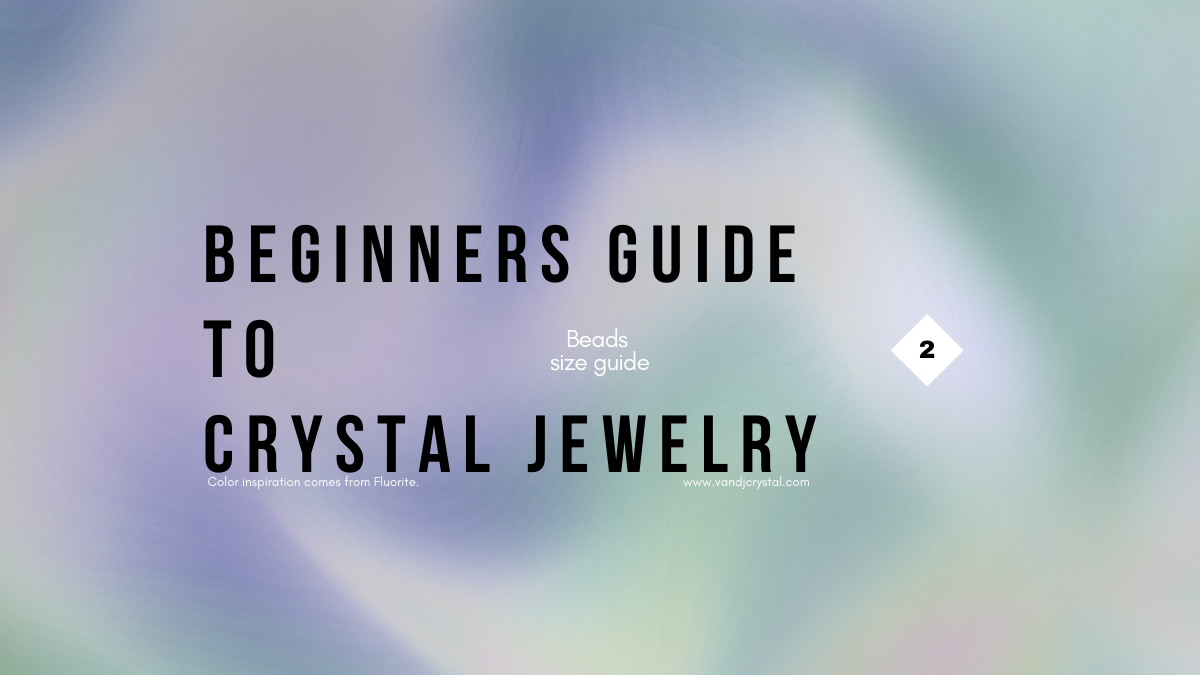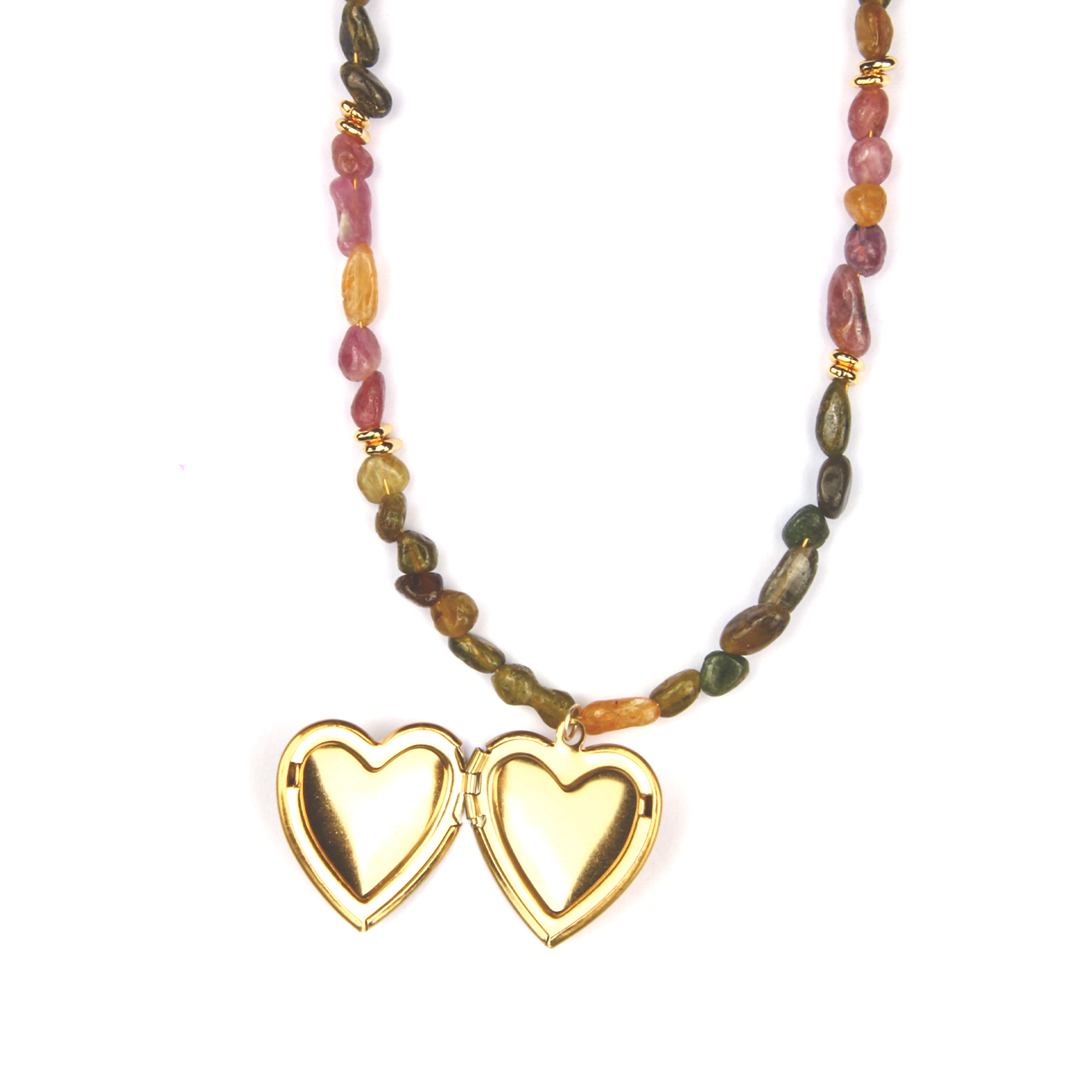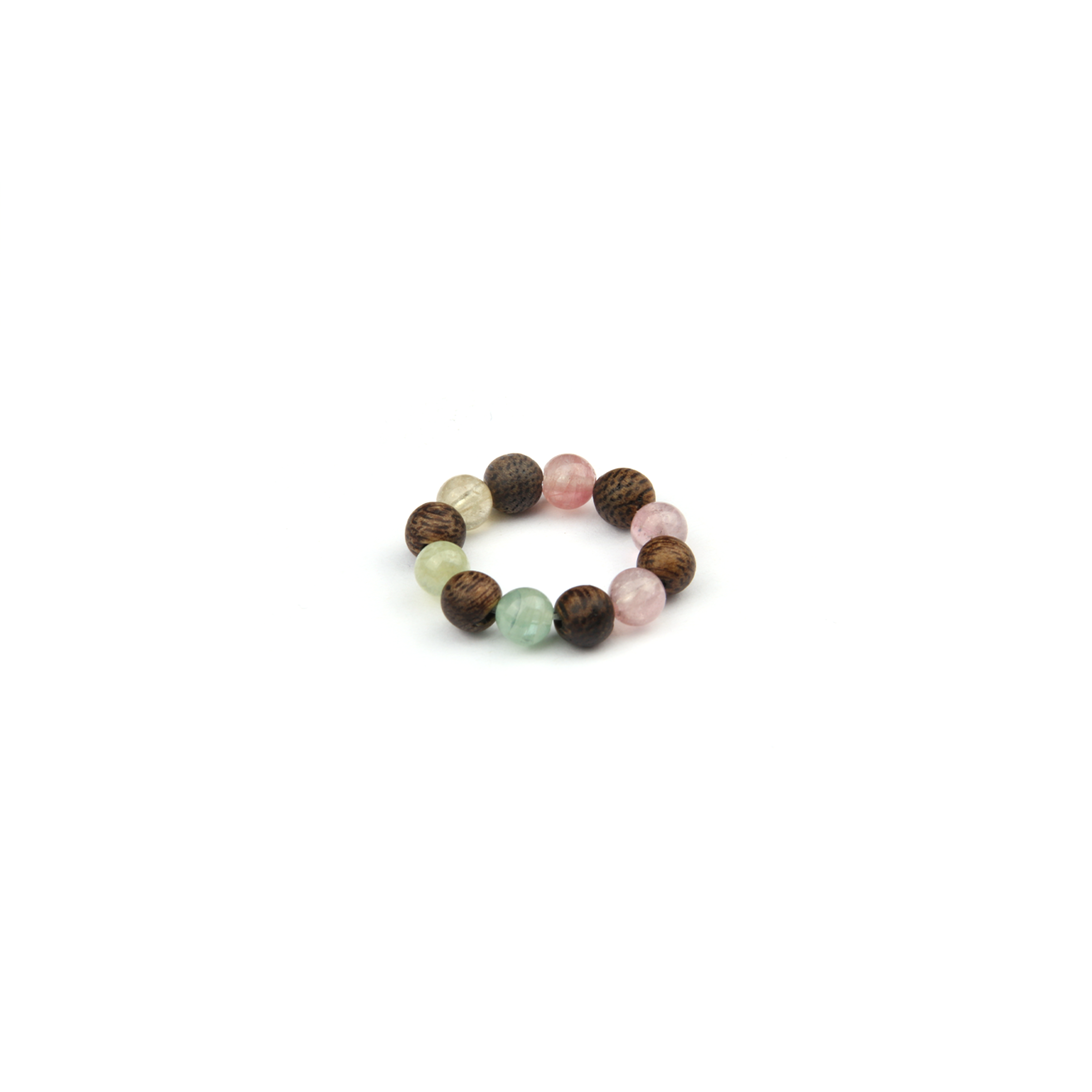How to Choose the Right Bead Size for Your Crystal Bracelet?
When designing or purchasing a crystal bracelet, one of the key decisions is choosing the right bead size. Whether you're making your own jewelry or buying a ready-made piece, understanding bead sizes will help you create or find the perfect bracelet that matches your style and needs. Beads come in a wide variety of sizes, and selecting the right one can make all the difference in terms of comfort, appearance, and even the healing properties of your bracelet.
In this guide, we'll walk you through how to choose the ideal bead size for your crystal bracelet, provide a bead size chart for reference, and offer tips on selecting the best size for your needs.
Visualizing Bead Sizes with Everyday Items
To make it even easier for you to choose, we’ve included a handy bead size chart with real-world comparisons. By referencing familiar objects like Type-C, Apple, Android, and USB charging ports, you can visually compare the bead sizes to something you encounter every day. This method makes it much easier to decide which size feels right for you.
Why Bead Size Matters in Crystal Bracelets
The size of the beads you choose plays a significant role in both the aesthetic appeal and functionality of your crystal jewelry. Here’s how bead size can affect your bracelet:
Visual Impact:
Larger beads, such as 10mm or 12mm, create a bold, statement-making look, while smaller beads, like 4mm or 6mm, offer a more subtle and delicate appearance.






Comfort:
Larger beads tend to feel heavier on the wrist, while smaller beads offer a lighter, more comfortable fit. This can be crucial if you're wearing the bracelet every day.
Healing Properties:
For those who believe in the healing properties of crystals, the energy of crystal healing bracelets may also be influenced by the size of the beads. Larger beads may be thought to amplify the crystal’s properties, while smaller beads may be seen as offering a gentler, more balanced effect.
Bead Size Chart: Comparing Sizes from 2mm to 20mm
To make the selection process easier, we’ve created a bead size chart that compares various sizes of beads, from as small as 2mm to as large as 20mm.
2mm to 5mm Beads: Delicate and Detailed
These small beads are the go-to choice for designers who prefer a refined, understated style. Ideal for delicate designs or when you're looking to create intricate, detailed patterns, 2mm to 5mm beads allow you to add layers of texture without overwhelming the piece. When used in stacked bracelets, these beads create a subtle yet intricate effect, perfect for a minimalist look or a boho-chic style.
-
Style Tip: These tiny beads are great for healing crystal jewelry that aims for a soft, harmonious energy. Consider combining multiple small beads with genuine healing crystals like clear quartz or rose quartz for a bracelet that promotes calmness and balance.




6mm Beads: Versatile and Balanced
6mm beads strike the perfect balance between subtlety and visibility, making them one of the most popular choices for both crystal bracelets and healing crystal jewelry. They’re big enough to add visual interest but small enough to remain versatile and easy to wear. Whether you’re creating a single-strand bracelet or a multi-strand necklace, 6mm beads provide a balanced look that complements a wide variety of styles.
-
Style Tip: 6mm beads are perfect for those who prefer an elegant and understated piece that doesn’t overpower the wearer. These beads are ideal for creating timeless designs that work well for everyday wear as well as special occasions.


8mm Beads: Bold but Elegant
If you're looking for a bead size that makes a statement without feeling too heavy or overpowering, 8mm beads are an excellent choice. These beads add a noticeable visual impact while still maintaining an elegant, sophisticated look. They're great for creating focal points in your designs, whether in a single crystal bracelet or a statement necklace.
-
Style Tip: The 8mm bead size is often favored by those looking to create a chic and stylish look, perfect for adding personality to healing crystal jewelry without compromising on elegance. Try using clear quartz, citrine, or tiger's eye to create dynamic designs with energy-enhancing properties.


10mm Beads and Larger: Statement-Making and Bold
Large beads are the centerpiece of any design. They’re perfect for creating bold crystal jewelry that catches the eye. However, be mindful of the weight and comfort, especially if you plan to wear the bracelet daily.
-
Style Tip: Larger beads are often used in avant-garde, fashion-forward designs that prioritize making an impact. If you want a piece that stands out, opt for larger beads like 12mm, 14mm or 16mm in striking healing crystals like lapis lazuli, turquoise, green phantom quartz or malachite.






Helpful Tip:
If you’re new to selecting beads, start with 6mm or 8mm beads, as they are the most versatile and work well with a wide range of wrist sizes and design styles.
Consider Your Wrist Size and Style
When choosing the right bead size, it's also important to consider your wrist size and personal style. Larger beads may feel heavy or overwhelming if you have smaller wrists, while smaller beads may not stand out as much if you have larger wrists. Here’s how to think about this:
Smaller Wrist (Under 6.5 inches/16.51 cm):
Opt for beads in the 4mm to 6mm range for a delicate look or 6mm to 8mm for more visibility without overwhelming your wrist. These beads are great for layering, stacking, or creating fine, intricate patterns in designs like multi-layered crystal bracelets or elegant necklaces.
Average Wrist (6.5 to 7.5 inches/16.51-19.05 cm):
6mm to 8mm beads are ideal, offering a good balance between comfort and style.Medium-sized beads provide enough visual impact to create a statement piece while still maintaining a balanced, classic look. These beads work well for both simple everyday jewelry and more sophisticated designs.
Larger Wrist (Over 7.5 inches/19.05 cm):
Designed to make a bold statement, these beads are perfect for creating fashion-forward jewelry or pieces that serve as the focal point of an outfit. They can be used in avant-garde designs or paired with smaller beads for a more dynamic, contrasting effect.
Here is a complete guide of how to size your wrist >>
Bead Size and Price Relationship
When it comes to selecting beads for your crystal bracelet or other jewelry pieces, size is a significant factor that affects both the visual appeal and the price of the beads. As with many other materials, bead prices tend to increase as their size grows, and this relationship is especially noticeable with natural gemstones and crystal beads. Understanding how bead size correlates with price will help you make informed decisions whether you’re purchasing finished jewelry or creating your own designs.
Natural Gemstone Beads
Natural gemstones, such as amethyst, turquoise, clear quartz, and tourmaline, are among the most sought-after materials for healing crystal jewelry. These beads are typically more expensive than synthetic ones, and their price often scales with size. Here's why:
- Material Scarcity: Larger gemstone beads require more raw material. For example, a 10mm amethyst bead requires significantly more raw amethyst than a 6mm bead, which naturally makes it more expensive.
- Cutting and Processing: Cutting large gemstones into perfect beads is more labor-intensive and time-consuming. Gemstones must be carefully shaped, polished, and drilled, and larger stones require a higher level of precision. This additional work adds to the cost.
- Rarity of Larger Stones: Larger, high-quality gemstones are rarer, especially for more exotic or precious stones. For instance, a 12mm rose quartz bead of high quality might be harder to find than a 6mm one, and this rarity drives up the price.
Crystal Beads
While crystal beads are generally more affordable than precious gemstones, their prices still increase with size. For example, 6mm crystal beads are a popular size for crystal bracelets and tend to be priced lower than 10mm or 12mm crystal beads.
- Production Costs: Larger crystals take more raw material and can be more expensive to produce due to the additional energy required during the manufacturing process.
- Design and Use: Larger crystal beads are often used in more intricate designs or as statement pieces, which may add to their cost due to their decorative appeal.
Synthetic and Non-Natural Beads
Beads made from synthetic materials or non-natural stones, such as glass beads, resin beads, or wood beads, are generally more affordable than their natural counterparts. However, their prices still follow the same trend—larger beads cost more. This is due to:
- Material Costs: Even synthetic beads require more raw material to create larger sizes, and their price reflects this.
- Manufacturing Process: While synthetic beads may be easier to produce than gemstones, larger beads may require more energy or advanced machinery for shaping and finishing.
Price Differences in Popular Bead Sizes
To provide a better understanding of how size impacts price, here's a rough idea of how prices might scale for different bead sizes:
-
Extra Small Beads (2mm – 3mm):
Because these beads require more precise craftsmanship and careful drilling to control the hole size, perfectly round beads are often more expensive than irregular ones. Even though the material usage is small, the additional labor and technical costs are significant and should not be underestimated. - Small Beads (4mm - 6mm): These are still considered small beads, but since the production techniques for this size are already well-developed, the craftsmanship is stable and the labor costs are no longer particularly high.
- Medium Beads (8mm - 10mm): These beads are a great balance between size and affordability. They offer enough visual impact without being too heavy or bulky. Many crystal bracelets use 8mm beads as the standard size, making them a popular choice for both casual and formal jewelry.
- Large Beads (12mm and above): Larger beads, such as 12mm or 14mm, are often used as focal points in designs. These beads tend to be significantly more expensive, especially when made from natural gemstones.
Factors Influencing Price Beyond Size
While bead size is a major determining factor in price, several other aspects can influence the cost:
- Quality of the Material: Higher-quality gemstones or crystals will always command a higher price. For example, high-quality rose quartz with no inclusions will cost more than regular rose quartz beads.
- Bead Shape and Cut: Specially cut beads, like faceted crystals or unique shapes, often come with a premium. Even if the beads are of the same size, their price could vary based on the craftsmanship involved in the cut.
- Origin and Rarity: Beads from rare locations or specialty mines (like emeralds or tanzanite) will typically be more expensive, as they are harder to source.
For more information, please refer to the following websites.
- GIA (Gemological Institute of America)
- American Gem Society (AGS)
- Crystal Jewelry Size Chart Full Guide
- Crystal&Zodiac
- Crystal&Chakra
- Crystal&Birthstone
FAQs
Q1: What’s the best bead size for crystal bracelets?
The most common sizes are 6mm and 8mm—comfortable, versatile, and stylish for daily wear.
Q2: How do I pick the right bead size for my wrist?
-
Small wrists (under 6.5") → 4mm–6mm for a delicate look.
-
Average wrists (6.5"–7.5") → 6mm–8mm for balance.
-
Larger wrists (7.5"+) → 8mm–12mm for bold style.
Q3: Do bigger beads give stronger crystal energy?
Many believe larger beads radiate stronger energy, while smaller beads feel gentler and more subtle.
Q4: Are bigger beads more expensive?
Yes—larger beads need more raw material and precision cutting, especially with natural gemstones, making them pricier.
Q5: What bead size is best for layering bracelets?
Small beads (2mm–6mm) are perfect for stacking. You can also mix them with larger beads for extra contrast.
Q6: Can I mix different bead sizes in one bracelet?
Definitely! Combining bead sizes creates texture, balance, and a unique design.
Q7: What size should beginners start with?
Start with 6mm or 8mm—they’re the easiest to wear, style, and find in most crystals.
Selecting the right bead size is crucial when creating or purchasing a crystal bracelet. It affects both the aesthetic appeal and the comfort of the bracelet. By using the bead size chart, considering your wrist size, and thinking about your personal style and the healing benefits of the crystals, you can confidently choose beads that will enhance both your jewelry collection and your well-being.
Whether you're crafting your own healing crystal jewelry or buying a finished crystal bracelet, understanding bead sizes will ensure that your piece feels perfect and looks beautiful.
Don’t forget to check out our bead size chart, which is ready for printing and can help you find the ideal size when designing your next crystal bracelet!







Share:
Bracelet & Necklace & Ring Size Chart Guide
Properties and Their Powers for Zodiac Signs, Birth Months and Chakras